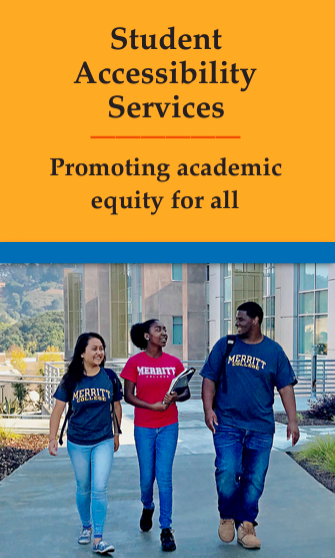More individuals in the United States have a hearing impairment than any other type of physical disability. A hearing impairment is any type of auditory impairment while deafness is an inability to use hearing as a means of communication. Hearing loss is measured in decibels and may be mild, moderate, or profound. A person who is born with a hearing loss may have language deficiencies and exhibit poor vocabulary and syntax. Title V lists Hearing Impairments under the heading Communication Disability.
Definitions:
- Hearing Impairment: A generic term used to describe all types of hearing defects, ranging from a minute loss to profound deafness.
- Hard of Hearing: A specific condition in which hearing is defective to varying degrees; usually a hearing aid can enhance the understanding of speech.
- Deaf or Deafness: An inability to use hearing as a means of communication; hearing aids can enhance awareness of vibrations such as horns or sirens, but not speech.
Suggestions:
Communication:
Lighting is very important when communicating with a deaf or hard of hearing person. Do not stand in front of a window or bright light when talking. Try to talk where there is adequate, well distributed light. Be sure to face them when talking. Speak slowly and do not over exaggerate your lip movements. Keep your hands away from your face. Facial activities such as cigarette smoking, vigorous gum chewing, or biting your lips prevent clear communication. Using facial expressions, gestures, and other “body language” is helpful in conveying your message. Be aware that individuals who can hear make the best lip readers, (also call “speech readers”). Of individuals who had extensive training in lip reading, hard-of-hearing students can understand up to 50 percent of speech, and deaf students can understand only up to 25 percent. It takes a great deal of concentration to lip read.
If you see a student with a hearing aid, this does not mean that the student can understand verbal language. The student may require an alternative form of communication, (i.e., an interpreter, note taker, or use of other hearing aid devices.) When using an interpreter to communicate with a student, address the student directly saying “How are you today?” Many students who are hard-of-hearing do not hear tone of voice, therefore, some expressions, such as sarcastic statements, might be misleading if taken literally. Try to avoid giving misleading information this way. Also, try to avoid using idioms or colloquial expressions.
Seating:
A student who is deaf or hard-of-hearing depends on visual cues to supplement what he or she does not hear. Seating is an important consideration. The student will need to be near the front so that his or her view is not obstructed. If a student has a unilateral hearing loss, he or she should be seated so that maximum use of the good ear is permitted.
Participation:
Because of a time lag between the spoken word and the interpretation, the student’s contribution to the lecture or discussion may be slightly delayed. Students may have some speech and/or language impairments. Although this does not affect a student’s ability to learn new information, some difficulty in the acquisition of new vocabulary may lead to reluctance to participate in class. Assumptions should not automatically be made about the student’s ability to participate in certain types of classes. For example, students may be able to learn a great deal about music styles, techniques, and rhythms by observing a visual display of the music on an oscilloscope or similar apparatus or by feeling the vibrations of music.
Testing:
Most students will be able to take tests and evaluations in the same way as other students. Some may need additional time in order to gain a full understanding of the test questions. It has been found that if the test is written, some students do better if an interpreter reads and translates the questions to the student in sign language. However, many other students prefer to read tests themselves. If the method of evaluation is oral, the interpreter can serve as the reverse interpreter for the student. Avoid oral administrated exams requiring written answers.
The primary form of communication with the Deaf community is American Sign Language. (Sign language is NOT universal.) In view of this, many persons who are deaf or have profound hearing loss since birth or an early age have not mastered the grammatical subtleties of their “second language” English. This does not mean that instructors should overlook errors in written (or spoken) work. However, they should know that this difficulty with English is not related to intelligence but is similar to that experienced by students whose native language is other than English.
Sign Language Interpreters:
Some students will attend classes with a sign language interpreter or interpreting team. The interpreters will usually situate themselves in front of the class to interpret lectures and discussions. Interpretation will be easiest in lecture classes and more difficult in seminar or discussion classes. Because class formats are so varied, it is recommended that the professor, interpreter, and student arrange a conference early in the course to discuss any special arrangements that may be needed. Please be aware of the difficulties the student may have trying to watch a film and the interpreter at the same time. (All films must be captioned. See Alternate Media to request captioning.) An interpreter’s proficiency level decreases after 20 minutes. You can help make sure that the student is receiving clear and concise transmission by allowing breaks for any class over 50 minutes. If you need to communicate directly with the interpreter, he or she will interpret your conversation into sign language for the student.
However, always speak directly to the student.
Note-takers:
Because the student will need to watch the interpreter when you or anyone else is speaking, it will be necessary to select a note taker unless the student is using a real-time captioner. Your help in doing this will be very much appreciated. Please take a moment to review the Instructor Guidelines for Choosing a Note-taker.
Possible Accommodations:
Academic support
• Alternative testing (extended time, reader, scribe, distraction reduced setting, and/or computer)
• Interpreting or Real-Time Captioning Services
• Note-taking assistance
Downloads:
• Notetaker Proceedures form
• Interpreting Request Form
Captioning Request Form





